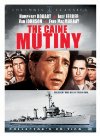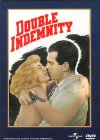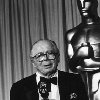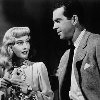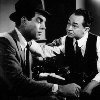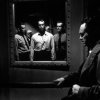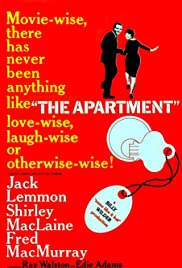 Greetings again from the darkness. This is the latest addition to my “revisited” series where I re-watch and then write about (not a review) a genuine classic movie. It’s been 60 years on this one, so please expect spoilers with no spoiler alerts. Appearing on most every legitimate list of greatest cinematic comedies, director Billy Wilder’s film actually defies categorization and is a terrific blend of comedy-romance-drama and commentary on societal gender roles of that era. Mr. Wilder co-wrote the razor-sharp script with I.A.L. “Iz” Diamond. The two were collaborators off and on for 15 years, including what many consider to be the best comedy of all-time, as well as one of Marilyn Monroe’s finest films, SOME LIKE IT HOT (1959).
Greetings again from the darkness. This is the latest addition to my “revisited” series where I re-watch and then write about (not a review) a genuine classic movie. It’s been 60 years on this one, so please expect spoilers with no spoiler alerts. Appearing on most every legitimate list of greatest cinematic comedies, director Billy Wilder’s film actually defies categorization and is a terrific blend of comedy-romance-drama and commentary on societal gender roles of that era. Mr. Wilder co-wrote the razor-sharp script with I.A.L. “Iz” Diamond. The two were collaborators off and on for 15 years, including what many consider to be the best comedy of all-time, as well as one of Marilyn Monroe’s finest films, SOME LIKE IT HOT (1959).
Jack Lemmon stars as CC “Bud” Baxter, a clerk at Consolidated Life, a New York insurance company with 31,259 employees. Baxter is but a minor cog in the conglomerate wheel, save for one thing: he allows upper management to use his apartment for their extramarital affairs. He doesn’t much like the arrangement, but lacks the backbone to stand up to them – especially since they dangle the carrot of promotion. Although the neighbors think he is a womanizing Lothario, Baxter’s life is void of companionship. He’s on the outside (of his own apartment) while others are living it up. Elevator Operator Fran Kubelik (Shirley MacLaine) has caught Baxter’s eye, yet while she is courteous and friendly, she politely deflects his flirtations.
When that promotion finally comes through, Baxter finds himself with yet another executive requiring use of the apartment. Jeff Sheldrake (Fred MacMurray) is the Human Resources Manager, and his demands lead to a most disheartening discovery. Baxter is crushed when a broken compact mirror and the office Christmas party allow him to figure out that Mr. Sheldrake is having an affair with Ms. Kubelik, and he himself has been providing the place.
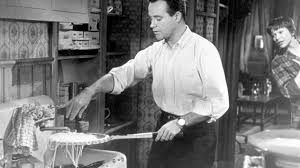 There are so many terrific scenes and performances, it’s not practical to go through each and every one. The early interactions between Baxter and Kubelik are quite fun – he’s so eager, and she’s so careful not to wound his pride. Kubelik and Sheldrake in the booth at the Chinese Restaurant is quite remarkable, and Baxter’s neighbors (Jack Kruschen and Naomi Stevens) are especially effective as the doctor and his quick-to-judge wife. Sheldrake’s secretary, Miss Olsen (Edie Adams), is a standout in her Christmas Party scene with Ms. Kubelik, and watching Baxter and Mrs. MacDougall (Hope Holiday) drunkenly dance the holiday hours away is comedic genius, although nothing can top Baxter deftly wielding a tennis racquet (wooden frame, of course) to strain pasta.
There are so many terrific scenes and performances, it’s not practical to go through each and every one. The early interactions between Baxter and Kubelik are quite fun – he’s so eager, and she’s so careful not to wound his pride. Kubelik and Sheldrake in the booth at the Chinese Restaurant is quite remarkable, and Baxter’s neighbors (Jack Kruschen and Naomi Stevens) are especially effective as the doctor and his quick-to-judge wife. Sheldrake’s secretary, Miss Olsen (Edie Adams), is a standout in her Christmas Party scene with Ms. Kubelik, and watching Baxter and Mrs. MacDougall (Hope Holiday) drunkenly dance the holiday hours away is comedic genius, although nothing can top Baxter deftly wielding a tennis racquet (wooden frame, of course) to strain pasta.
The film earned 10 Oscar nominations, and won in 5 categories: Best Picture, Best Director (Wilder), Best Screenplay (Wilder and Diamond), Best Art/Set Direction (Alexandre Trauner, Edward G Boyle), and Best Film Editing (Daniel Mandell, who also won Oscars for THE BEST YEARS OF OUR LIVES, 1946, and THE PRIDE OF THE YANKEES, 1942, and who also started in showbiz as an acrobat for The Flying Mandells in Ringling Brothers Circus). The film’s other nominees were Best Actor (Lemmon, a 2-time Oscar winner for MISTER ROBERTS, 1955, and SAVE THE TIGER, 1973), Best Actress (MacLaine, Oscar winner for TERMS OF ENDEARMENT, 1983), Best Supporting Actor (Kruschen), Best Cinematographer (Joseph LaShelle, and Oscar winner for LAURA, 1944), and Best Sound (Gordon Sawyer). Somehow Adolph Deutsch’s film score got nominated for a Grammy, but not for an Oscar. He did win 3 other Oscars for ANNIE GET YOUR GUN (1950), SEVEN BRIDES FOR SEVEN BROTHERS (1954), and OKLAHOMA! (1955).
Writer-director Billy Wilder is truly one of cinema’s giants. In his career, he was nominated for 21 Oscars, winning 6 (THE LOST WEEKEND 1945, SUNSET BLVD 1951). This film was released one year after SOME LIKE IT HOT (1959), a film that often tops the list of best all-time comedies. That film and this one, are also in the battle for best final line: “Nobody’s perfect” vs “Shut up and deal”. Wilder admitted that his idea for THE APARTMENT came from one scene in BRIEF ENCOUNTER, the excellent 1945 film from director David Lean, adapted from Noel Coward’s play.
Jack Lemmon’s “Bud” Baxter is just one of many memorable characters throughout his stellar career that featured 8 Oscar nominations, 2 Oscars, and roles in comedy and drama. He was a close friend of comedian Ernie Kovacs who was married to Edie Adams (Miss Olsen in this movie), and had a remarkable comedy partnership (10 movies) with Walter Matthau, the best known of which is THE ODD COUPLE (1968). Lemmon appeared in 7 Billy Wilder movies, and was the first actor to win Oscars for both Best Actor and Best Supporting Actor.
Shirley MacLaine was only 25 years old when she starred as Fran Kubelik. Like Mr. Lemmon, her (6) Oscar nominations were spread across four decades (50’s, 60’s, 70’s, 80’s), finally winning for TERMS OF ENDEARMENT (1983). In real life she is Warren Beatty’s big sister, although they’ve never appeared in the same film. Ms. MacLaine is renowned as a film actress, stage performer, dancer, author (multiple books), and of course, New Age guru. She’s now 86 years old and still working.
Fred MacMurray plays the scoundrel Jeff Sheldrake. Mr. MacMurray is best known for his 12 seasons and 380 episodes as the most patient father on “My Three Sons”. His career spanned fifty years (1929-1978), and he made his mark as a serious actor in such films as the ultimate film noir classic DOUBLE INDEMNITY (1944) and THE CAINE MUTINY (1954). He sprinkled in some westerns, before shifting to comedy in the first Disney live action film THE SHAGGY DOG (1959), and then family fare like THE ABSENT MINDED PROFESSOR (1961) and SON OF FLUBBER (1963). He was certainly an underrated, though never out-of-work actor. On an interesting side note, when he was age 22, he played saxophone in a band that featured Bing Crosby as the lead singer.
 Edie Adams plays Miss Olsen, secretary to MacMurray’s Sheldrake. Her screen time here is limited, but her role is crucial to the story and well-crafted by Ms. Adams. She was the wife of early TV comedy legend Ernie Kovacs, who died in a car accident in 1962 at age 42. Ms. Adams put together a multi-faceted career including time as a nightclub singer, and actress on TV, stage, and film. She is still remembered for her iconic cigar commercials: https://www.youtube.com/watch?v=y7EbLIdE88Q
Edie Adams plays Miss Olsen, secretary to MacMurray’s Sheldrake. Her screen time here is limited, but her role is crucial to the story and well-crafted by Ms. Adams. She was the wife of early TV comedy legend Ernie Kovacs, who died in a car accident in 1962 at age 42. Ms. Adams put together a multi-faceted career including time as a nightclub singer, and actress on TV, stage, and film. She is still remembered for her iconic cigar commercials: https://www.youtube.com/watch?v=y7EbLIdE88Q
Baxter’s neighbors are played by Jack Kruschen as the understanding Dr. Dreyfuss and Naomi Stevens as the more direct Mrs. Dreyfuss. Mr. Kruschen’s 48 year career covered more than 220 credits in TV and film. Ms. Stevens is remembered for her role in VALLEY OF THE DOLLS (1967) and a recurring role on “The Doris Day Show”. She passed away (age 92) just a couple of months before her 70th wedding anniversary.
Joyce Jameson plays “the blond” Marilyn Monroe lookalike. She is best known for her roles in Roger Corman horror films, and for a recurring role as bombshell Skippy on “The Andy Griffith Show.” Another link to that classic TV series comes from Hal Smith, who dons the Santa Claus costume in the bar. You might recall Mr. Smith as Otis, the town drunk in Mayberry. He was also the voice of Owl in numerous “Winnie the Pooh” cartoons and movies. Hope Holiday plays Mrs. MacDougall, Baxter’s dance partner on Christmas Eve. Ms. Holiday was known as “the voice”, and made frequent appearances in Billy Wilder films.
In addition to MacMurray’s Sheldrake, the other four managers to take advantage of Baxter and his apartment were played by David Lewis (a recurring role as the Warden on “Batman” TV series), Willard Waterman (well-known character actor in radio, TV, film), David White (Larry Tate on “Bewitched”), and Ray Walston. Mr. Walston had many memorable roles including teacher Joe Dobisch in FAST TIMES AT RIDGEMONT HIGH (1982), JJ Singleton in THE STING (1973), co-starring with Bill Bixby in “My Favorite Martian”, and as Judge Henry Bone in “Picket Fences.” He’s yet another in the cast whose career lasted nearly 50 years.
The film’s lasting impact comes courtesy of the fun and energy and comedy on the surface, supported by a sadness lurking underneath. It offers a brilliant balance between lightness and serious social issues, and provides quite a statement of the times. A glance at the era shows us what a typical office environment was like. Women were subjected to endless harassment and unsolicited offers from the men in charge. They either had to find a way to deal with it, or quit and find another job – one where they’d likely face the same culture. Still, despite the sadness, the film does offer a bit of hope … plus some truly classic lines (including that last one). Girl with the “wrong guy” is common theme in movies and literature (and life), but “that’s the way it crumbles, cookie-wise.” And the next time you are debating with friends over a list of Christmas movies, don’t forget Billy Wilder’s THE APARTMENT. Hey, if DIE HARD qualifies, this one surely must!
watch the trailer:



 Posted by David Ferguson
Posted by David Ferguson 